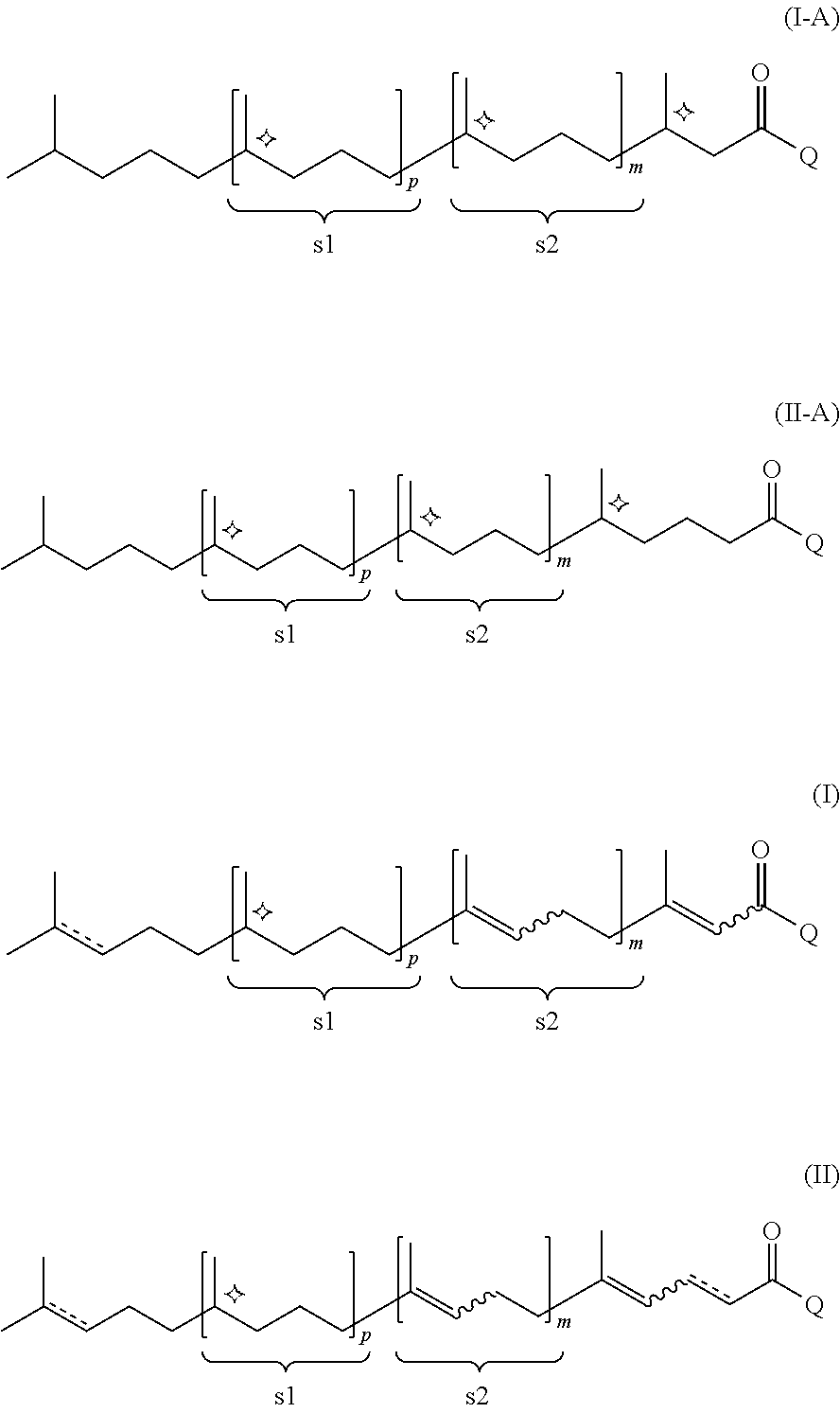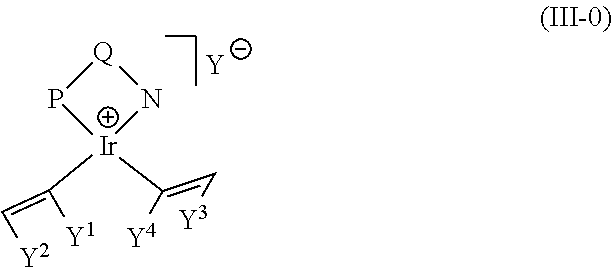Efficient process of asymmetric hydrogenation of unsaturated ketones using additives
- Summary
- Abstract
- Description
- Claims
- Application Information
AI Technical Summary
Benefits of technology
Problems solved by technology
Method used
Image
Examples
examples
[0155]The present invention is further illustrated by the following experiments.
Analytical Methods
[0156]GC Determination of purity of (6R,10R)-6,10,14-trimethylpentadecan-2-one
[0157]Agilent 6850, column DB-5HT (30 m, 0.25 mm diameter, 0.10 μm film thickness), 115 kPa helium carrier gas). The samples were injected as solutions in hexane, split ratio 300:1, injector temperature 200° C., detector temperature 350° C. Oven temperature program: 120° C. (5 min), 14° C. / min to 260° C. (2 min), 20° C. / min to 280° C. (4 min), runtime 22 min.
(R)-6,10-dimethylundecan-2-one (THGA) and 6,10-dimethylundec-5-en-2-one (DHGA):
[0158]Agilent 6850, column DB-5HT (30 m, 0.25 mm diameter, 0.10 μm film thickness), 107 kPa helium carrier gas). The samples were injected as solutions in hexane, split ratio 300:1, injector temperature 200° C., detector temperature 350° C. Oven temperature program: 100° C. (8 min), 10° C. / min to 200° C. (1 min), 20° C. / min to 220° C. (4 min), runtime 24 min.
GC Determination of ...
PUM
| Property | Measurement | Unit |
|---|---|---|
| Substance count | aaaaa | aaaaa |
Abstract
Description
Claims
Application Information
 Login to View More
Login to View More - R&D
- Intellectual Property
- Life Sciences
- Materials
- Tech Scout
- Unparalleled Data Quality
- Higher Quality Content
- 60% Fewer Hallucinations
Browse by: Latest US Patents, China's latest patents, Technical Efficacy Thesaurus, Application Domain, Technology Topic, Popular Technical Reports.
© 2025 PatSnap. All rights reserved.Legal|Privacy policy|Modern Slavery Act Transparency Statement|Sitemap|About US| Contact US: help@patsnap.com



